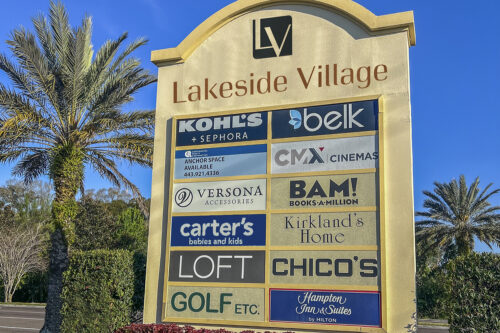May 21, 2021
Ari Abramson Contributes to Southeast Real Estate Business Source

Baltimore’s Stable Apartment Market Attracts New And Returning Buyers
By Ari Abramson, Vice President, Acquisitions, Continental Realty Corporation
Consistent with much of the nation, the Mid-Atlantic region, including Baltimore, locked down at the onset of the COVID-19 pandemic in March 2020. However, by late August 2020 and throughout the first quarter of 2021, activity in the multifamily asset class picked up considerably. As operations stabilized and investors could better determine valuations, regional transaction volume quickly heated up as investors returned with pent-up demand. Aided in part by the continued government stimulus and rent regulation in the Mid-Atlantic, Baltimore’s durable “meds and eds” employment bases, anchored by the life sciences, medical, higher education, and technology sectors, bolstered the region’s stability.
The Baltimore multifamily market has performed in-line with comparable metropolitan areas in the Mid-Atlantic, with flat to moderate rent growth. Rents are expected to stagnate or struggle in response to heightened development occurring in Downtown Baltimore, Owings Mills and Towson, and the new supply may surpass demand in the near-term. Despite muted rent growth projections, transaction volume has returned with an expanded pool of multifamily investors driving cap rates down and valuations up.
Baltimore City development shifting east
“Charm City” boasts blue-chip Downtown employers such as T. Rowe Price, Pandora, University of Maryland Medical Center, Johns Hopkins Hospital and Under Armour. In theory, this established employment base would represent the target renter cohort for either newly-developed Class A or recently value-added Class B+ communities. However, with the shifting of commercial development from the iconic Harborplace area at the intersection of Pratt and Lombard streets to Harbor East and Harbor Point on the east side, the City’s residential footprint is undergoing a major change as well. Harbor East and Harbor Point have emerged as prestigious enclaves of live, work and play. In addition, the 235-acre, $5.5 billion master-planned redevelopment of Port Covington will transform the southwestern portion of the City with its collection of residential, commercial office and retail space and vast amenities. Port Covington is considered to be among the largest urban renewal efforts in the country, and the expected development will create new high-wage employment which should create new demand for multifamily.
Larger unit sizes benefitting suburban-based assets
The continued investment in Baltimore City should also create demand for the first and second ring suburban locations. The pandemic has accelerated the migration to the suburbs and the added to the appeal of larger unit sizes. Residents have utilized these larger units and transitioned portions of their units into offices, gyms and classrooms. Suburban submarkets surrounding our region’s major metros which offer walkability to outdoor recreation or town centers that mimic urban living are expected to see a faster recovery compared to traditional dense, urban submarkets. In Baltimore these suburban submarkets include Towson, Columbia, Owings Mills and Annapolis.
Increased single-family home ownership creates downward pressure on rental rates
Additionally, the Baltimore Metro has experienced a home ownership increase, which has pulled residents who are typically renters by choice out of the Class A+ product in Baltimore County and City. We have seen owners of Class A+ product lower rental rates to maintain occupancy or to complete a slow lease-up. This has a trickle-down effect that creates downward pressure on the Class B segment to adjust rents accordingly. Further, this may allow the Class B segment to capture residents trading down from Class A to an affordable option within the same submarket that offers similar public-school zoning. As virtual schooling or hybrid schedules have become the norm, a highly-ranked public school option can be invaluable and a difference-maker. Overall, the Class A- and B+ segments continue to be the most resilient in the current market due to price points and steadier performance upon recovery.
Cap rates contract and investor interest expands in Baltimore
The submarket is experiencing a contraction of cap rates as Baltimore continues to benefit from an influx of “out of town” investors attracted to our economic demand drivers and local government policies. Pressures from rent control and increased regulations elsewhere have led typical Northeast investors to closely focus on the Mid-Atlantic region. This has heightened investor appetite for multifamily in Downtown Baltimore and the surrounding suburban submarkets.
We foresee this investor demand for Mid-Atlantic multifamily to continue to be strong and valuations to hold steady pending availability of low interest rates financing. The pandemic has disrupted cash flows, altered consumer habits and delayed asset-level strategies. This may create an opportunity to acquire a depressed NOI and provide investors opportunities to purchase properties that can later be repositioned upon full market recovery. The stability of the Mid-Atlantic will maintain its charm in the years to come.
This article first appeared in the April 2021 issue of Southeast Real Estate Business
Also Covered By




